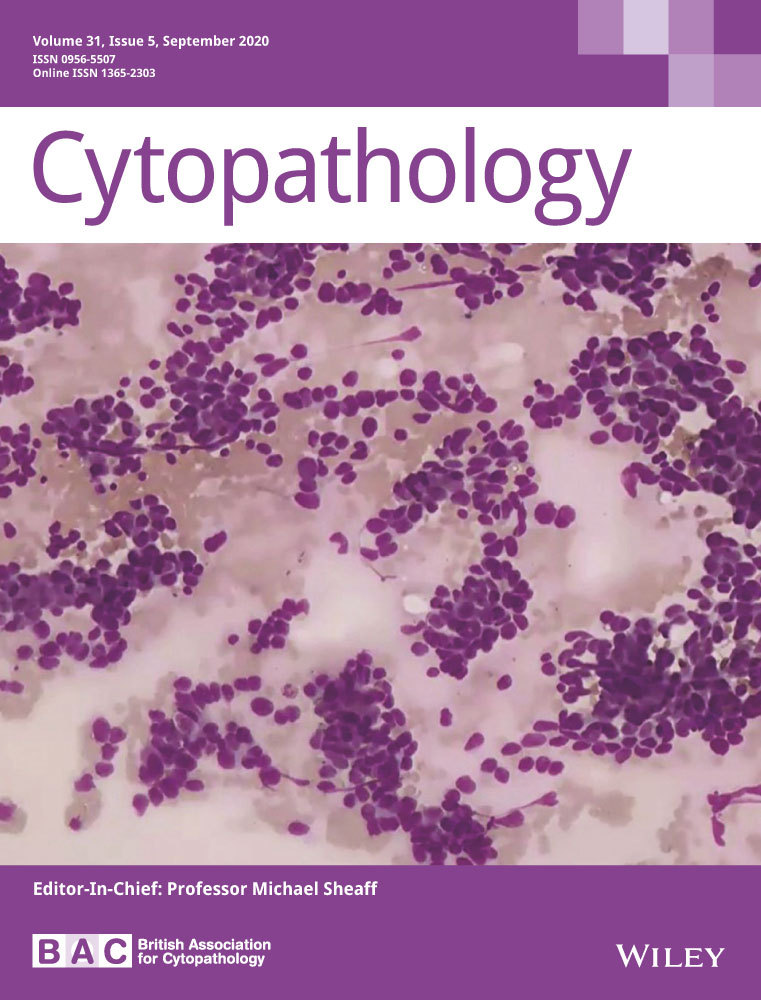Feasibility of a deep learning algorithm to distinguish large cell neuroendocrine from small cell lung carcinoma in cytology specimens
Abstract
Introduction
Distinguishing small cell lung carcinoma (SCLC) from large cell neuroendocrine carcinoma (LCNEC) in cytology is challenging. Our aim was to design a deep learning algorithm for classifying high-grade neuroendocrine carcinomas in fine needle aspirations.
Methods
Archival cytology cases of high-grade neuroendocrine carcinoma (17 small cell, 13 large cell, 10 mixed/unclassifiable) were retrieved. Each case included smears (Diff-Quik® and Papanicolaou stains) and cell block or concomitant core biopsies (haematoxylin and eosin [H&E] stain). All slides (n = 114) were scanned at 40× magnification, randomised and split into training (11 large, nine small) and test (two large, eight small, 10 mixed) groups. Tumour was annotated using QuPath and exported as JPEG image tiles. Three distinct deep learning convolutional neural networks, one for each preparation/stain, were designed to classify each tile and provide an overall diagnosis for each slide.
Results
The H&E-trained algorithm correctly classified 7/8 (87.5%) SCLC cases and 2/2 (100%) LCNEC cases. The Papanicolaou stain algorithm correctly classified 6/7 (85.7%) SCLC. and 1/1 (100%) LCNEC cases. The algorithm trained on Diff-Quik® stained images correctly classified 7/8 (87.5%) SCLC and 1/1 (100%) LCNEC cases.
Conclusion
Using open source software, it was feasible to design a deep learning algorithm to distinguish between SCLC and LCNEC. The algorithm showed high precision in distinguishing between these two categories on H&E sectioned material and direct smears. Although the dataset was limited, our deep learning models show promising results in the classification of LCNEC and SCLC. Additional work using a larger dataset is necessary to improve the algorithm's performance.
Abstract
Distinguishing small cell lung carcinoma from large cell neuroendocrine carcinoma is important for clinical management. However, making the distinction in cytology material can sometimes be challenging. Using open-source software, the authors designed a deep learning algorithm for classifying high-grade neuroendocrine carcinomas in fine-needle aspirations (FNA).
CONFLICT OF INTEREST
No disclosures for Dr Gonzalez and Dr Dietz. Dr Pantanowitz is on the medical advisory board for IBEX and is a consultant for Hamamatsu.
Open Research
DATA AVAILABILITY STATEMENT
The data that support the findings of this study are available from the corresponding author upon reasonable request.




